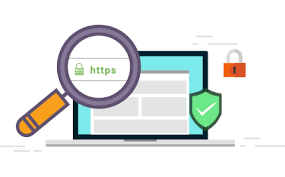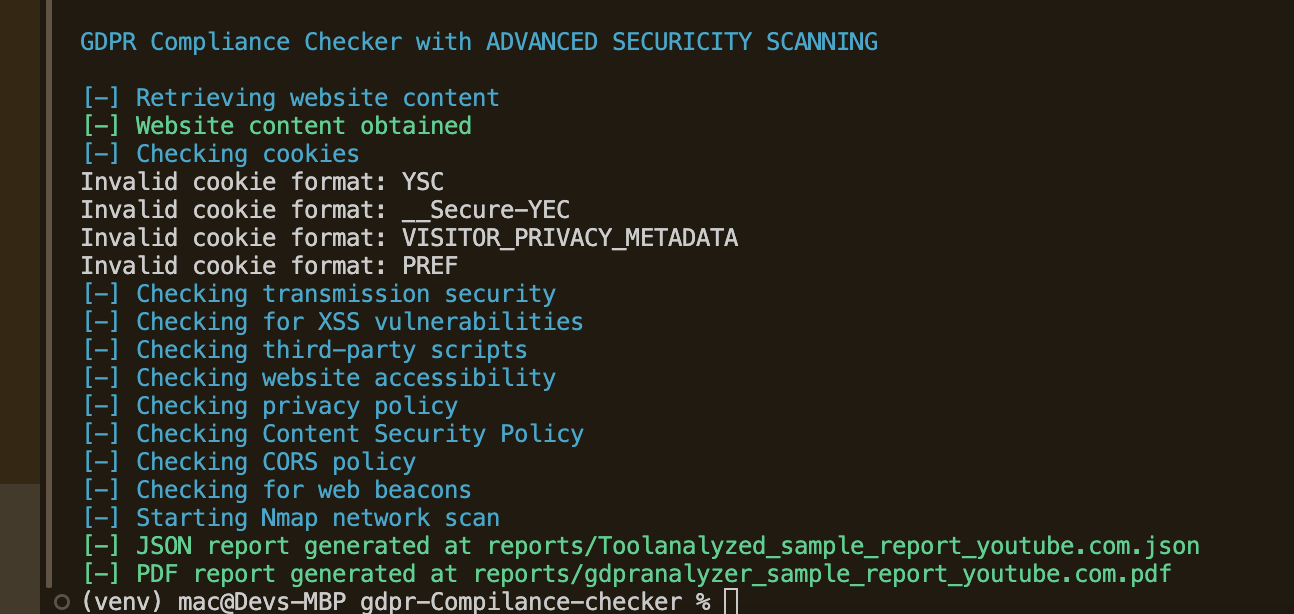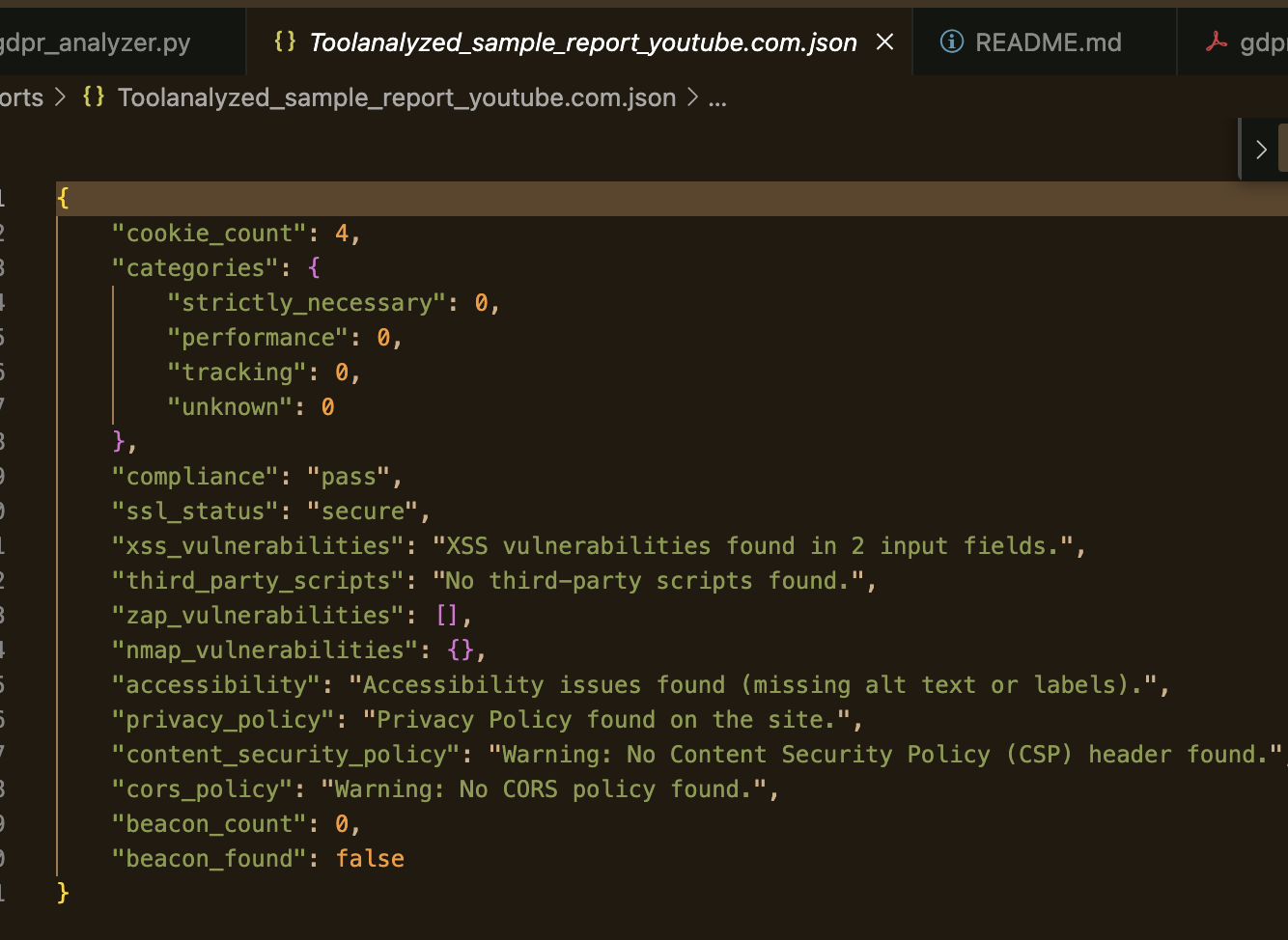GDPR Compliance Checker with ZAP Integration
A Must-Have for Businesses
Introduction
In today’s digital age, ensuring that your business complies with privacy laws like the General Data Protection Regulation (GDPR) isn’t just a legal necessity—it’s a trust factor that can make or break your reputation. My GDPR Compliance Checker project, designed with security-first principles, offers businesses a comprehensive tool to assess their GDPR compliance and detect security vulnerabilities that could expose sensitive data. What makes this project stand out is its dual focus: ensuring legal compliance while running deep security scans using OWASP ZAP, identifying risks before attackers can exploit them.

Navigating the Complex World of Cookies
The project kicks off by evaluating the cookies that the target website deploys. Cookies—tiny bits of data stored on users’ browsers—can range from necessary for operation to those that track user activity for advertising purposes. My tool classifies these cookies into categories such as “Strictly Necessary,” “Performance,” and “Tracking,” helping businesses understand whether they are overstepping privacy boundaries. GDPR mandates explicit consent for certain types of cookies, and my checker flags any excess use, marking sites that pass or fail the compliance test.
Detecting Security Weaknesses with XSS and OWASP ZAP
GDPR compliance alone isn’t enough in a world filled with hackers. The GDPR Compliance Checker is equipped with a robust cross-site scripting (XSS) vulnerability detection system. XSS vulnerabilities are like leaving your front door unlocked—they allow attackers to inject malicious scripts into your website, potentially compromising user data

But I didn’t stop there. For deep penetration testing, I integrated OWASP ZAP. This feature performs a spider scan to crawl through the entire site and then launches an active scan that checks for a wide array of vulnerabilities. If any are found, the tool creates detailed reports about the risk level, helping businesses proactively secure their website. OWASP ZAP ensures that your site remains resilient against attacks, which is critical for GDPR compliance under the security provisions of Article 32.
SSL/TLS, CORS, and CSP: The Silent Protectors of Your Data
The tool also dives into some of the more technical, yet essential, areas of website security. Transmission security is key to protecting personal data as it travels across the web. My checker ensures that the target URL uses secure transmission protocols, flagging any sites that lack HTTPS encryption, leaving data vulnerable to man-in-the-middle attacks.
Another crucial check comes in the form of Content Security Policy (CSP) headers. CSP protects users from various injection attacks by limiting the types of content that can be loaded on a page. Similarly, the tool checks for CORS (Cross-Origin Resource Sharing) headers, which ensure that only trusted domains can interact with your web application. Sites that lack these safeguards could inadvertently expose users to third-party risks, violating GDPR’s data protection requirements.
Third-Party Scripts: Hidden Data Harvesters
Many websites rely on third-party services like Google Analytics or Facebook Tracking. While these services can be useful, they also introduce a compliance risk if they collect data without users’ knowledge or consent. My GDPR checker combs through the site’s HTML to uncover any third-party scripts that could be gathering user data. In the era of data breaches and privacy scandals, this feature allows businesses to take control of their third-party dependencies and ensure full transparency with their users.
Accessibility and Web Beacons: The Overlooked Details
What sets this project apart from basic compliance tools is its focus on inclusivity and user transparency. Websites that fail to accommodate users with disabilities risk alienating a significant portion of their audience, not to mention facing potential fines. My tool checks for basic WCAG compliance by ensuring that all images contain descriptive alt text and forms are properly labeled, making the web a more accessible place for everyone.

I also built in a feature that detects web beacons, those often invisible 1x1 pixel images used to track user behavior. Identifying these sneaky trackers is crucial for companies aiming to be fully transparent and GDPR compliant.
Comprehensive Detailed Reporting
To top it all off, the tool generates detailed PDF and JSON reports on the compliance status of your website. Whether you need a high-level overview or a deep dive into the technical aspects, the reports provide actionable insights on how to improve both compliance and security.
With the GDPR Compliance Checker and Security Scanner, I’ve combined cutting-edge technology and deep cybersecurity expertise into a tool that not only helps companies meet legal standards but also ensures that their website is fortified against threats. This showcases my skills in cybersecurity, data privacy, and regulatory compliance.
Tools & Technologies
- Selenium
- Python
- ZAP(OSWAP ZAP)
- NMAP
- Geckodriver
- Network Security